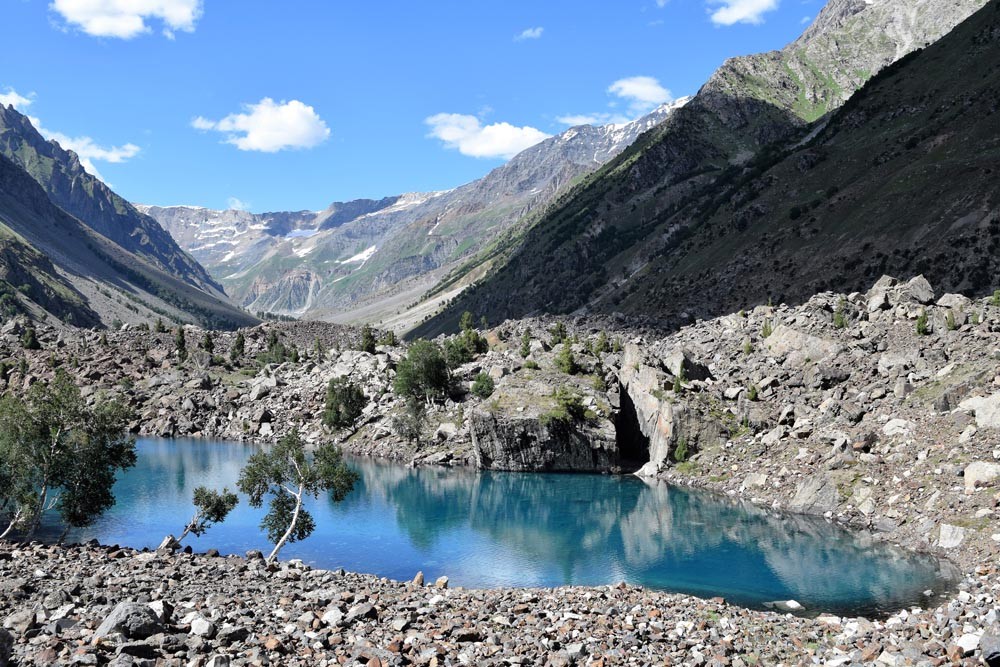
The beauty of lakes in the Naltar valley is awe-inspiring and the ski slope an added attraction

Dorothy, the sister of famous poet William Wordsworth, wrote in her journal in 1802: "I never saw daffodils so beautiful… [they] tossed and reeled and danced and seemed as if they verily laughed with the wind that blew upon them over the lake." Her vision was later immortalised by her brother in his classical poem, ‘The Daffodils’. Lakes set in beautiful landscapes have always aroused romance among writers and poets.
Inspired by such poetic narrations and tales of beauty of lakes in Naltar valley that I had heard over many years, I decided that time had arrived to visit them. So, we set out on a three-hours journey from Gilgit on the newly-constructed Gilgit-Hunza road, crossed Hunza River near Nomal village and entered a gorge on our way to the Naltar valley.
This is typical of most valleys in the north, where at the base is a village that leads you into a gorge with a roaring stream and at the end of the gorge the landscape gives way to a valley full of orchards, pine jungles, water streams and human settlements. I have seen a similar pattern in Kailash, Misghar and Shigar valley.
After a drive of two-hours through the gorge, we reached the main Naltar village. Naltar is one of the two ski resorts in Pakistan. The other being in Malam Jabba in Swat. Naltar village is divided into Naltar Payan and Bala, and is spread on both sides of the Naltar stream. However the ski resort is developed on the valley’s western slope. The resort is under the control of Pakistan Air Force, and you would want to be their guest if you really want to enjoy Naltar. There are good lodging facilities available with Pakistan Air Force besides some reasonable hotels in the village.
The ski slope is more than two kilometres long and has newly-installed chairlifts to take skiers to Bargo Pass at the top. The skiing season starts in November and remains on till March. Pakistan Skiing Federation organises annual skiing events here. The local skiers give a tough competition to those arriving from all over Pakistan and abroad. They have participated and won in international events, including Sochi and Vancouver Winter Olympics.
I remember going to Naltar for the first time way back in my teens. Sitting with four other Abdalians in the back of an army jeep, we tossed over each other on the dangerously narrow jeep track. Those were the days when nothing tired us. I remember on a cloudy June afternoon, it was so cold in Naltar that we could not break bread with our frozen fingers. Perhaps global warming has changed the climate of the valley, for when we were there it was warn.
Naltar is also a wildlife sanctuary. Though you may not see any wildlife in the main gorge, you might want to venture out to the surrounding gorges along the streams to watch the beautiful Astore Markhors, Ibex, brown bears and the occasional snow leopards.
Our plan was to see the famous lakes in the area and take a scenic drive beyond the Naltar village. On a track that was only SUV-worthy, we reached the Satrangi lake in about an hour from the Naltar village. The lake is appropriately named, as it reflects multiple colours and looks fabulous. Satrangi is no Saif ul Malook. Still, it retains an aura of sorts. There are some boating facilities available at the lake along with tea stalls.
Our next stop was Feroza or blue lake another 15 minutes up the gorge. On the way, we had to cross many water streams and endure a bumpy ride but the travel was indeed worth it. The lake has various shades of turquoise blue waters, is freezing cold and so clear that you can actually see the fish and the pebbles at the bottom. One person in our group of travellers thought of taking a dip but the moment his feet touched the freezing waters, he aborted the plan, and instead decided to sip hot tea with us at the shores enjoying the landscape.
Feroza is also called the Twin lake, as it is divided into two by a ridge in between.
There are a few more lakes further up in the mountains but you have to trek for hours to reach them.
If you are more adventurous you can trek up Feroza to Naltar or Daintar Pass, and then cross eastward to Pakhora, eventually reaching Gilgit in a few days’ time. Similarly a good guide can take you to the Ishkoman valley on the west through high-mountain passes.
We were surrounded by snow-capped mountains throughout our travel and the landscape changed from barren rocky mountains to dense green pine forests with silver white water streams flowing from all directions to meet the central Naltar stream.
Naltar valley is recommended as a day trip from Gilgit or Hunza but you can also spend a night at a hotel in the Naltar village or an official resthouse. The government should improve the road access to Naltar and make chairlifts available for general public in the non-skiing season so that more tourists can enjoy this scenic and beautiful valley.